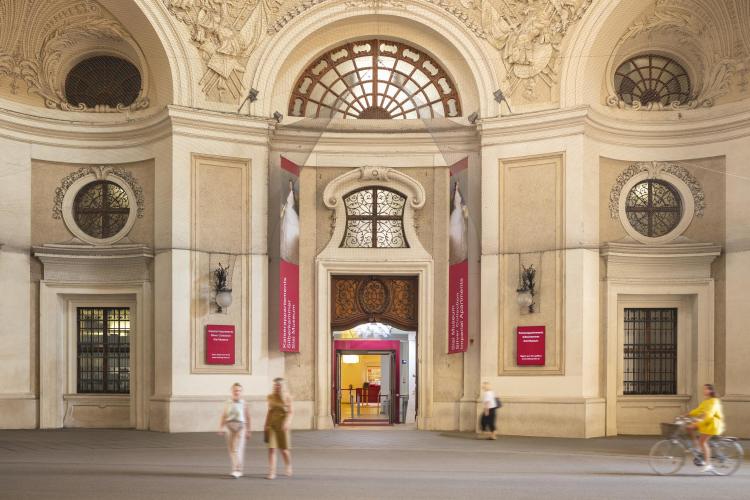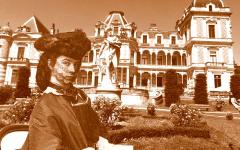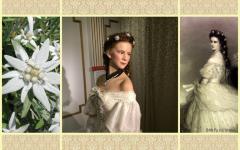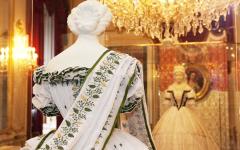Sisi Museum in Vienna
In the last decade of her life, the world did not show as much interest in Empress Elisabeth of Austria-Queen of Hungary as it does today. Although her cult began in Hungary during her lifetime, it was only a few decades after her tragic death that she became truly popular in Vienna and in the world. However, it was not only the assassination against her, but also Ernst Marischka's Sissi trilogy of the 1950s which surrounded her with an aura of myth. The figure of the young Romy Schneider, however, portrays a woman who has little to do with the real Empress Elisabeth, suggests Katrin Unterreiner, author of Sisi - Mythos und Wahrheit, in her book about the exhibition, which is also available in the museum gift shop. The exhibition portrays the real Sisi while shedding light on how the young and charming girl becomes a frustrated and desperate woman who wishes for death every day of her life.
Statue of Empress and Queen Elisabeth made by Hermann Klotz, Sisi Museum, Hofburg, Vienna. © Schloß Schönbrunn Kultur- und Betriebsges.m.b.H. / Severin Wurnig
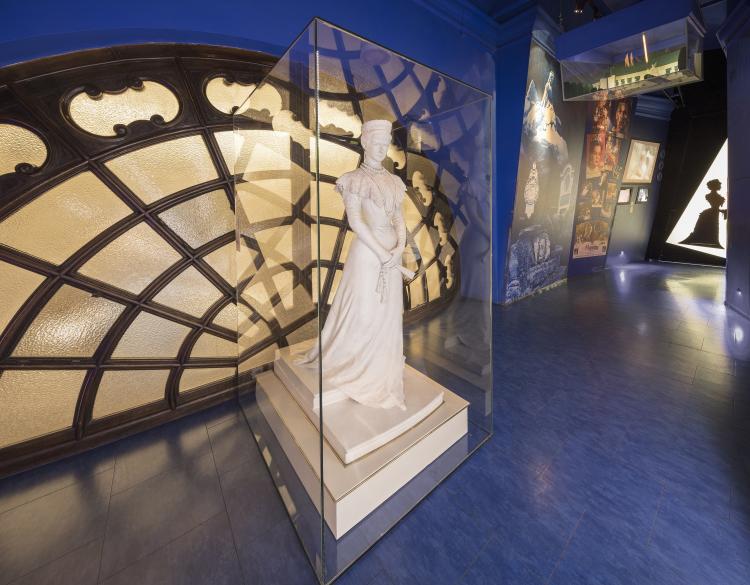
Sisi Museum presents the phases and possible reasons for the emergence of the Sisi myth - or the Sisi cult, and also introduces visitors to the interesting and mysterious personality of the Queen. It brings her closer to the visitors through the objects in her possession. It is a successful attempt to approach the iconic figure of the Empress and Queen from a different perspective while refuting many well-known theories and rumours about her, such as the idea of her false denture. You can also see the dental kit used only to care for her teeth. One can learn that the Empress, devoted to beauty and hygiene, visited her dentist frequently, sometimes unannounced.
Over the years, Elisabeth's teeth have been treated by many excellent dentists. She was also treated by Dr Adolf Zsigmondy, a Viennese doctor of Hungarian origin. “A story has survived, in which Zsigmondy performed the treatment in the Burg, and when he finished, he held out his hands expectantly. Queen Elisabeth asked him if he wanted anything. The answer was yes, a basin, soap, and a towel. The doorman brought a basin and soap, but the towel was missing. The Empress gave him her handkerchief to wipe his hands. The next time he came, a full set of towels was waiting for him.’ Elisabeth said, ‘Please wash your hands before you put them in my mouth, and not only afterwards.’ Whether or not the story is true is difficult to prove. In any case, it shows that the Empress’ standards for hygiene were well known.” (Queen Elisabeth and the Hungarians – a book by Barbara Káli-Rozmis.)
Empress-Queen Elisabeth’s Dressing and Exercise Room. It was probably here that Zsigmondy and the other dentists carried out their treatments when the Empress was in the Hofburg. © Schloß Schönbrunn Kultur- und Betriebsges.m.b.H. / Severin Wurnig
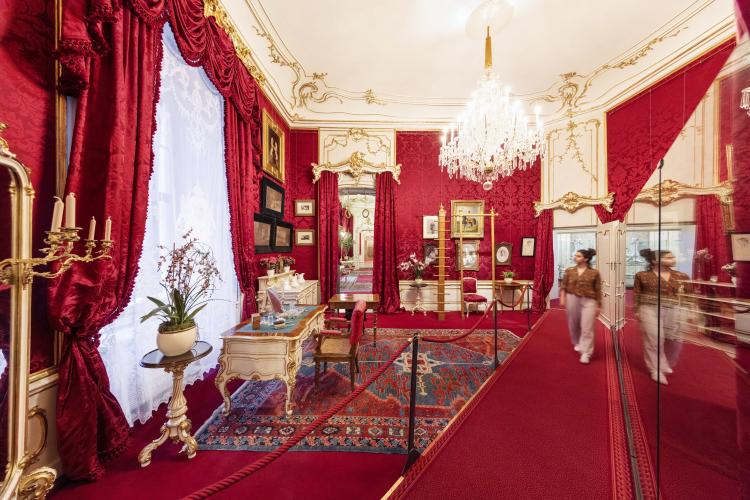
The dramatic effect of the exhibition is greatly enhanced by the dark rooms of the Sisi Museum, where only the objects on display are illuminated, sometimes in a very mysterious way. For instance, you can see one of the Queen’s famous “diamond stars”.
“The court jeweller Alexander Emanuel Köchert designed two diamond sets for the Empress. Both consisted of twenty-seven hairpins. Each piece within the set, commissioned by the Emperor, was decorated with a single pearl in its centre. The other was commissioned by Elisabeth, allegedly because she liked Mozart’s opera The Magic Flute. After seeing the play at the theatre, she wanted to wear bright stars in her hair like the Queen of the Night in the performance. Naturally, Elisabeth’s jewels were made of diamonds.
The star-shaped jewellery was not introduced by the Empress since many similar pieces had been made in England. Yet the jewels would be remembered as the Empress’ “famous diamond stars” although not all were star-shaped. The pieces ordered by Franz Joseph were designed in the shape of Eidelweiss each with a pearl in the middle while their “petals” were set with tiny diamonds. Eidelweiss was the flower of empresses and queens because of its exceptional value. Elisabeth had this pattern embroidered with gold thread on her dress, which she wears in the Winterhalter portrait. The extraordinary beauty of the dress was its magnificent sparkle. In February 1865, she attended a ball held to celebrate the wedding of her favourite brother, Duke Karl Theodor of Bavaria. When she danced in this “Eidelweiss dress”, the thousands of candles in the ballroom lit the gold-embroidered flowers which shone like stars, so her beautiful image could not be ignored.” (Queen Elisabeth and the Hungarians – a book by Barbara Káli-Rozmis. For this description of the book, I also used Martina Winkelhofer Sisis größter Triumph. Magazin der Kronen Zeitung, 2017.)
Empress Elisabeth's famous diamond star in the Sisi Museum © Schloß Schönbrunn Kultur- und Betriebsges.m.b.H. / Severin Wurnig
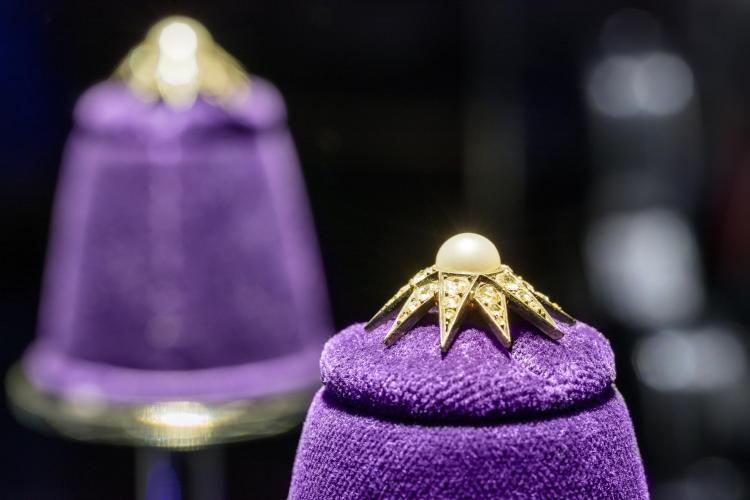
The picture that made Elisabeth famous: Franz Xavier Winterhalter’s portrait of the Empress is on display in the Sisi Museum, alongside a full-length portrait of the Emperor, also by Winterhalter. © Schloß Schönbrunn Kultur- und Betriebsges.m.b.H. / Severin Wurnig
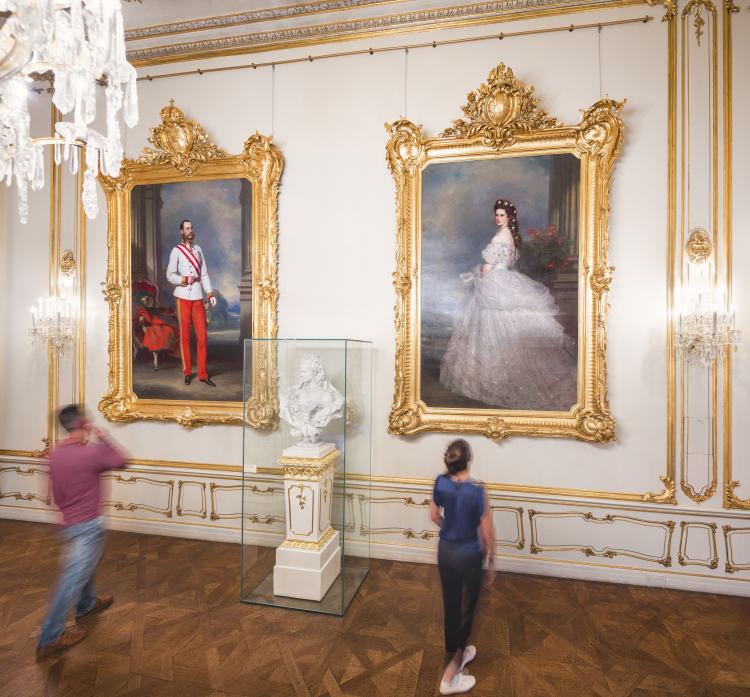
At 172 centimetres tall, Elisabeth's weight was around 45-50 kilograms throughout her life. Her hip measurement was 62-65 but we should add that hip measurement was measured higher back then. Her waist was about 45-50 and 55 centimetres, which she liked to emphasise by wearing a tight corset. Once or twice a day, she weighed herself on the scale still seen in the imperial apartments. It is widely believed that the Empress starved herself and suffered from various eating disorders, however, Olivia Lichtscheidl and Michael Wohlfart draw attention to the fact that Elisabeth's excellent athletic stamina and her thick, ankle-length, beautiful, healthy hair refute that she suffered from eating disorders such as anorexia (which is also associated with poor general health). Their book "Elisabeth - Empress and Queen" published in 2016 is also available in the museum gift shop.
She ate very little at court meals and tried to avoid eating after 6 pm, as the court kitchen served fatty, substantial meals at formal dinners. “Even with the wide choice of dishes on the menu, many people left the table with hungry stomachs: the Queen hardly ate, and the Emperor always finished very quickly, and if a dish was finished by them or not wanted, the others had to leave it too, and the lackeys picked up the dishes and went on to the next. After dinner, the hungry guests could finish their meal in the restaurant of the elegant Hotel Sacher if they were in Vienna, or in the small restaurant called ‘Burgzsandár’ (in English, ‘Palace Guard’) if they were in Budapest. However, they had to pay for the same large dinner because the remaining food was sold or ‘auctioned’ by the kitchen staff not to go to waste.” (Queen Elisabeth and the Hungarians – a book by Barbara Káli-Rozmis)
Dining Room in the Hofburg © Schloß Schönbrunn Kultur- und Betriebsges.m.b.H. / Severin Wurnig
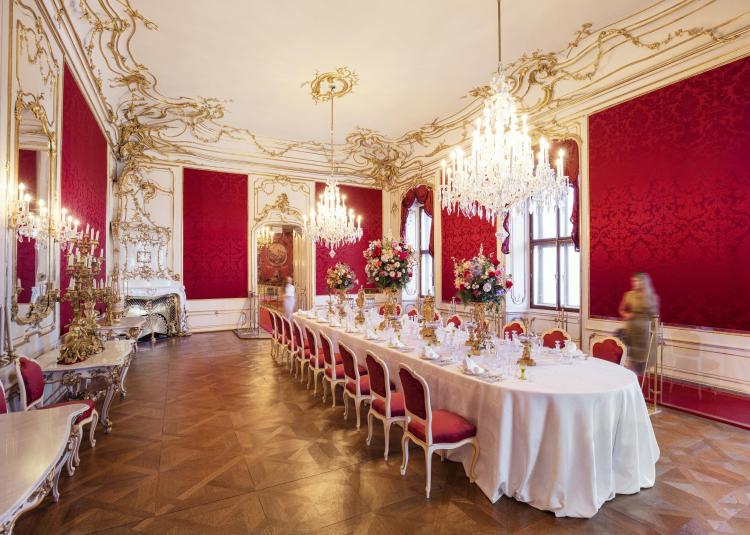
The Hofburg was the official residence of the imperial family. The building complex covers a total of 240 000 square metres in the centre of Vienna, like a small city within a city. It has 18 sections, 54 staircases, 26 corridors and 19 courtyards, and contains around 2 600 rooms. The complex is permeable in several places therefore Emperor Franz Joseph said that "a good emperor actually lives in a gateway house".
For centuries, the Viennese Hofburg was the centre of the Habsburg Empire. Today, three exhibitions offer visitors a historically authentic insight into courtly traditions and everyday life of the imperial family: the Imperial Apartments with their authentic furnishings, the Imperial Silver Collection with its extensive collection of objects recreating the sumptuous world of imperial dining, and the Sisi Museum with its lyrical exploration of the life of the Empress.
Tickets can be purchased in advance: Sisi Museum. If you want to visit more museums related to Empress and Queen Elisabeth, it is worth buying a Sisi Ticket to visit also the Schönbrunn Palace and the Imperial Furniture Museum at a reasonable price.
The Entrance of the Sisi Museum, Hofburg © Schloß Schönbrunn Kultur- und Betriebsges.m.b.H. / Severin Wurnig
